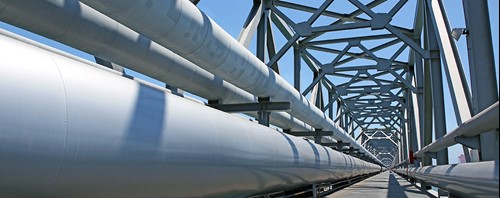News
DNV and Pipeline Infrastructure collaborate to integrate hydrogen into PIL gas network assets in India
DNV is providing technical advice and support to Pipeline Infrastructure Limited (PIL) on the integration of blended H2 into its gas trunkline assets in India – including transmission pipelines, interconnects and spur lines, compressor, valve and metering stations & equipment.

PIL’s initiative is one of the first H2 blended related projects in the transmission space in India, aligned with the government’s launch of India’s National H2 Mission in August 2021, targeting 5 MMtpy of H2 production by 2030. In conjunction with fiscal support and other incentives, the mission aims to leverage the nation’s significant renewable energy potential to transform India into a green H2 hub, help meet national climate goals and enable India to become a major producer and exporter of H2 to Japan, South Korea and Europe.
According to DNV’s Energy Transition Outlook 2021, demand for H2 in the Indian subcontinent will reach nearly 25 MMtpy by 2050, primarily for ammonia production, transportation and refining. As a basis for green H2 production, the report also shows strong predicted growth in renewable generation in India, particularly solar photovoltaics, wind and hydropower, which will make up 65% of the country’s electricity generation mix by 2050.
Akhil Mehrotra – MD&CEO - PIL said, “The H2 industry in India is still in its infancy and has a huge scope to supplement the growing energy needs while supporting the shift to a cleaner environment. Backed by strong governmental support for clean energy and significant renewable energy potential, India has the unique opportunity to become a major producer and exporter of H2.”
“Repurposing natural gas pipelines for H2 is 10%-30% of the cost of building new pure H2 networks. DNV is pleased to play a role in this by supporting PIL to transition its gas network to incorporate blended H2 to support local industries. In doing so, DNV will leverage its technical expertise and methodology to help our clients meet their emission reduction goals while retaining the use of their existing infrastructure,” said Brice Le Gallo, Vice President and Regional Director APAC, Energy Systems at DNV.
Drawing upon DNV’s expertise in assessing the technical impacts on gas pipelines of using H2 at different blending ratios, PIL will be provided with technical advice on the readiness of its infrastructure to incorporate H2. Furthermore, DNV will help PIL assess the suitability of its existing network and related assets to incorporate H2 at a range of blending levels (5%, 10%, 15%, 50% and 100%) covering the following:
- Assessment of pipeline integrity
- Assessment of pipeline safety
- Network operations with blended H2.
Blending H2 with natural gas in existing infrastructure will facilitate the use of a cleaner gas that can help countries such as India smoothly transition to a decarbonized future. Aside from rapidly and significantly lowering India’s carbon footprint, incorporating blended H2 in the transportation, power generation and industrial sectors can also offer new business opportunities.
Varadaraj Salian, Market Area Manager – India, Bangladesh and Sri Lanka for Energy Systems, DNV said, “This pioneering project will enable PIL to engage their stakeholders in developing and expediting realistic decarbonization goals for which DNV is providing the right technical knowledge, global expertise and best practices so that their operation is safe and sustainable.”

